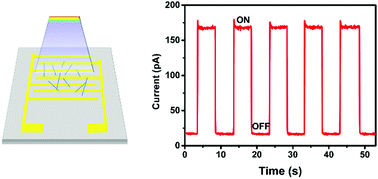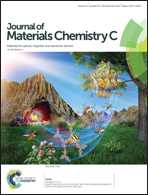(2-Methylpiperidine)PbI3: an ABX3-type organic–inorganic hybrid chain compound and its semiconducting nanowires with photoconductive properties†
Abstract
Organic–inorganic hybrid semiconducting nanowires have recently been widely regarded as promising candidates for electric and optical applications due to their faster carrier separation and low charge recombination. Here, we reported organic–inorganic hybrid semiconducting nanowires with photoconductive properties based on a one dimensional ABX3-type compound, (2-methylpiperidine)PbI3 (1). In 1, one dimensional infinite double chains are surrounded by protonated organic 2-methylpiperidine cations to form a quantum wire structure, which has been thought to be favorable for carrier transport. Furthermore, the prepared semiconducting nanowires of 1 display obvious photoconductive properties, which have been verified using I–V and time-dependent photoresponse measurements. All the results indicate that such semiconducting nanowires based on low dimensional organic–inorganic hybrid materials have potential photoelectric applications.

- This article is part of the themed collection: 2017 Journal of Materials Chemistry C HOT Papers


 Please wait while we load your content...
Please wait while we load your content...